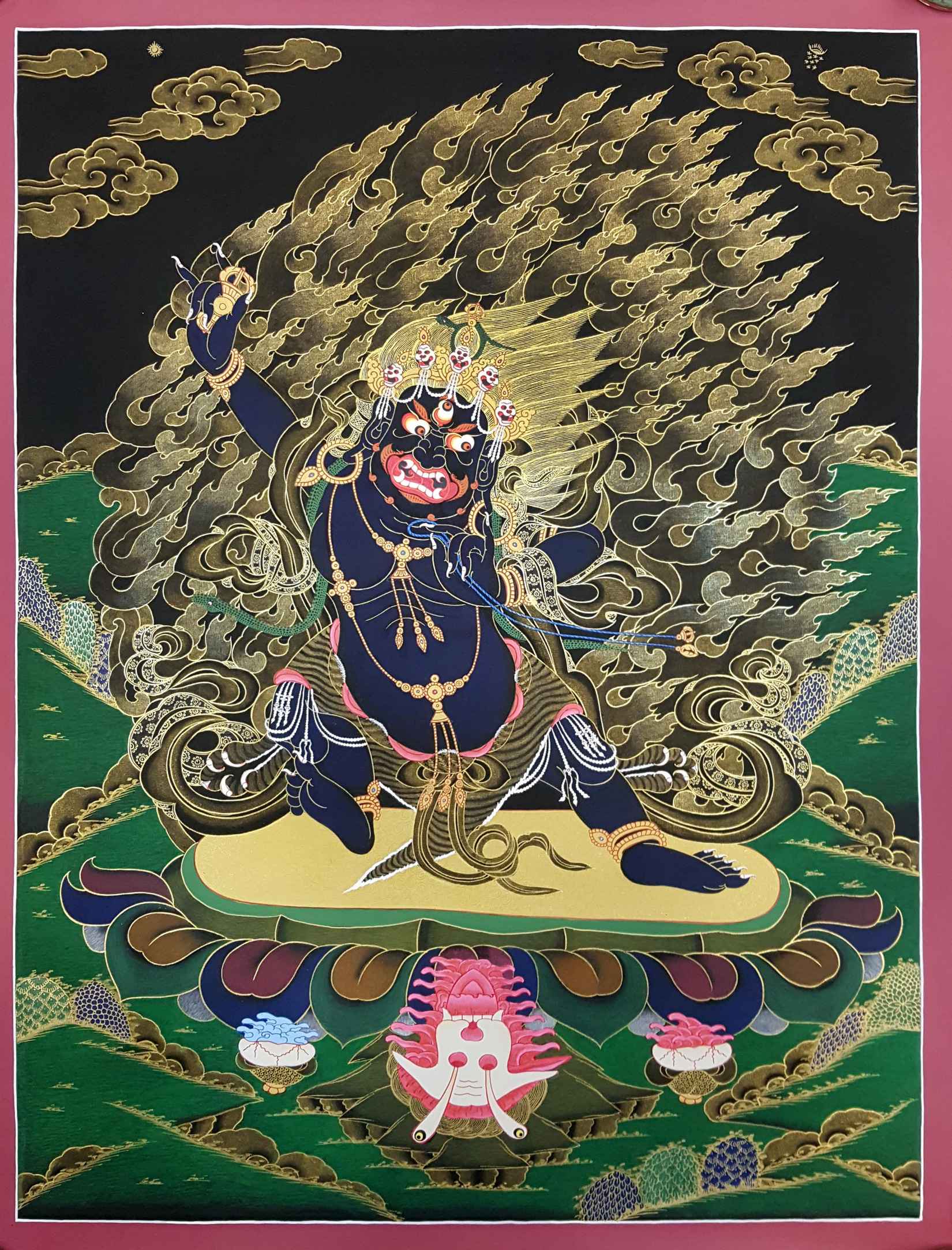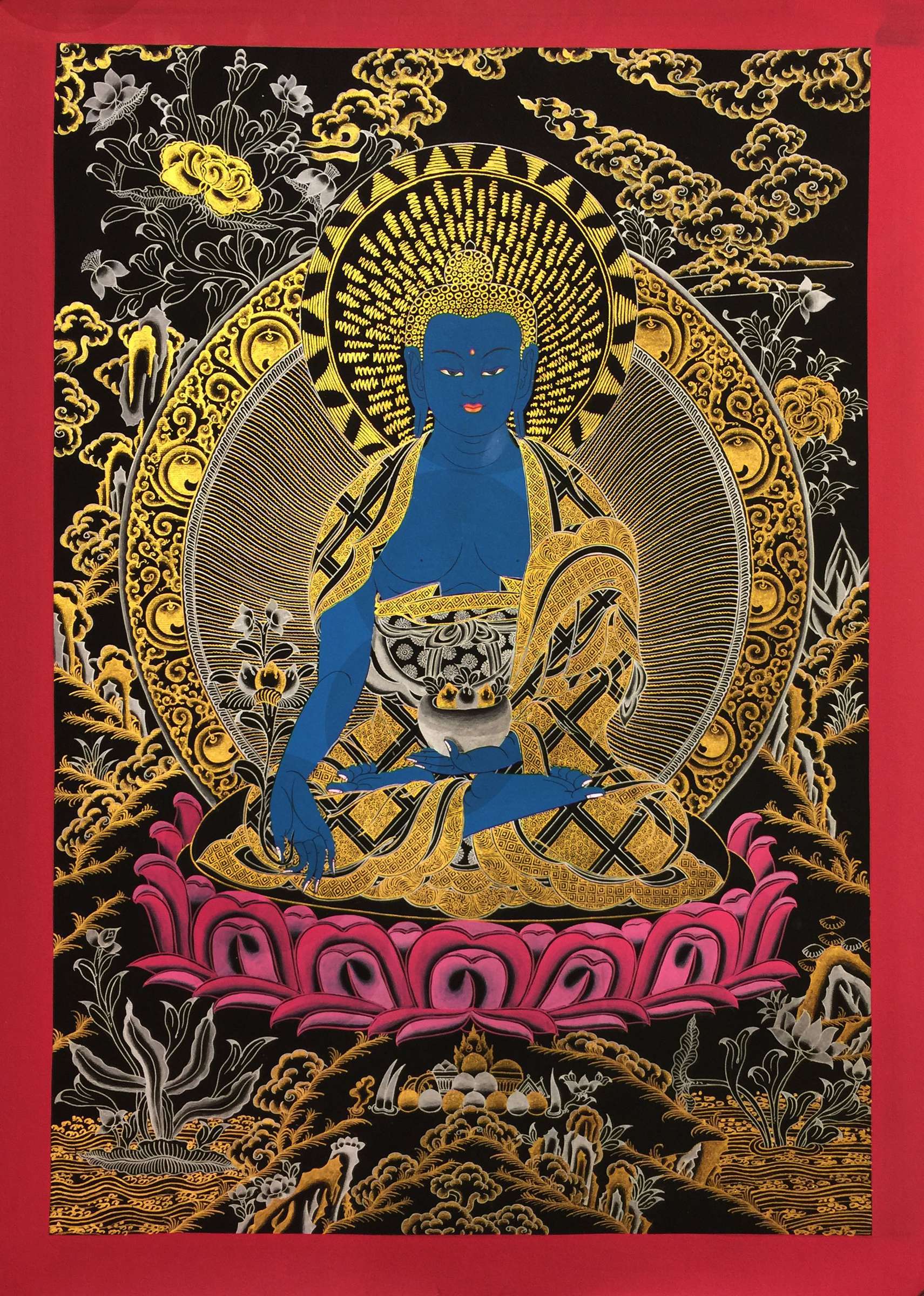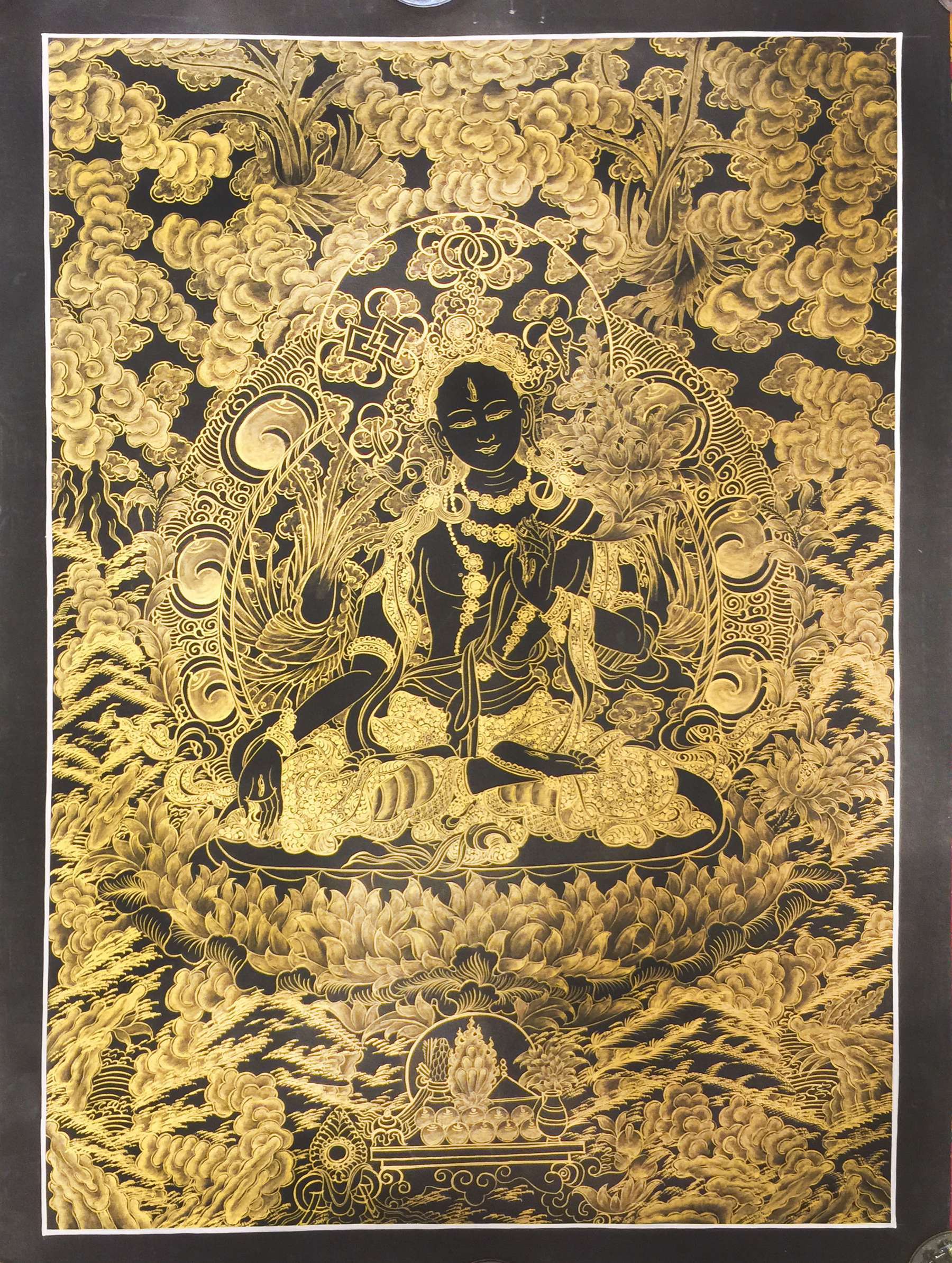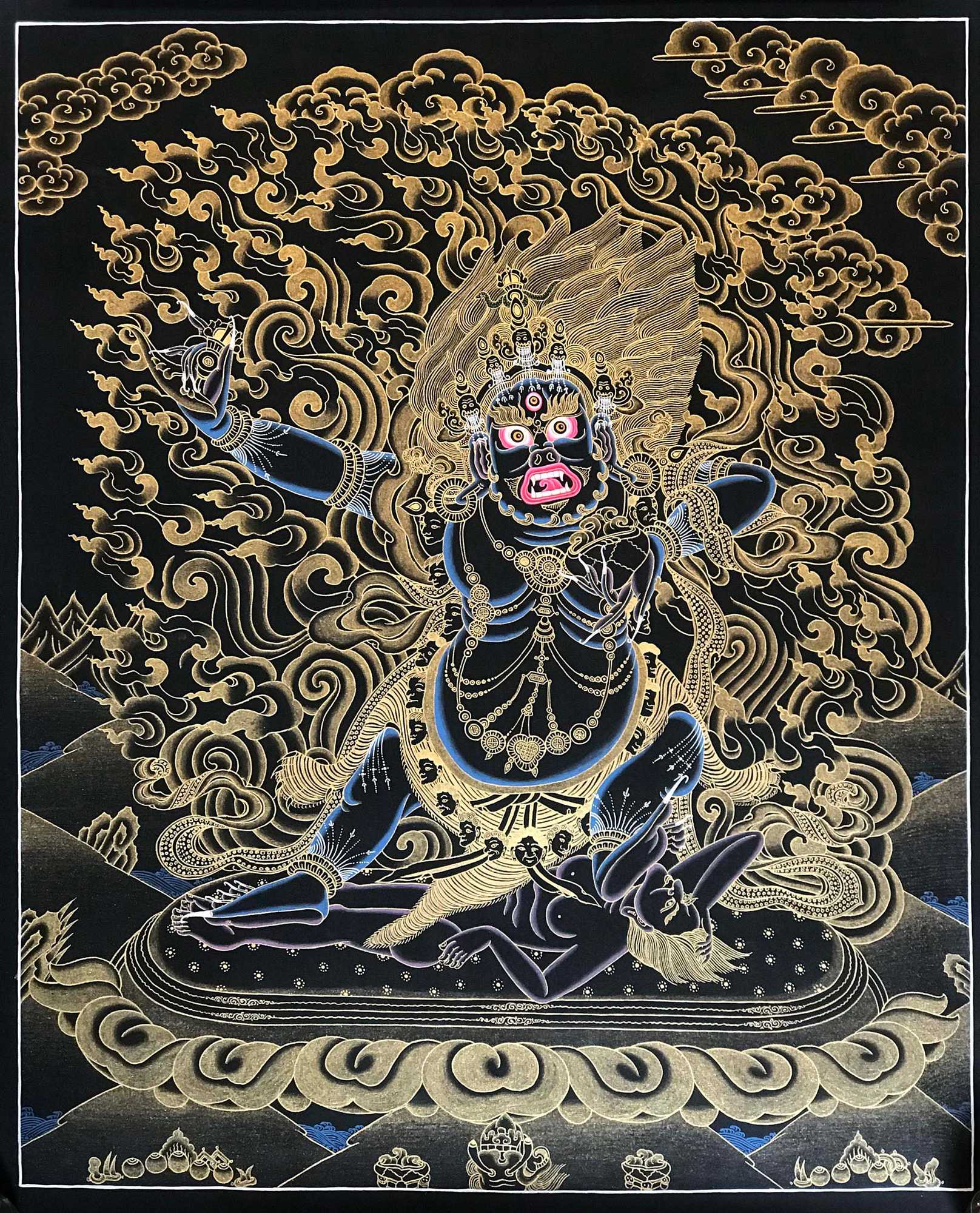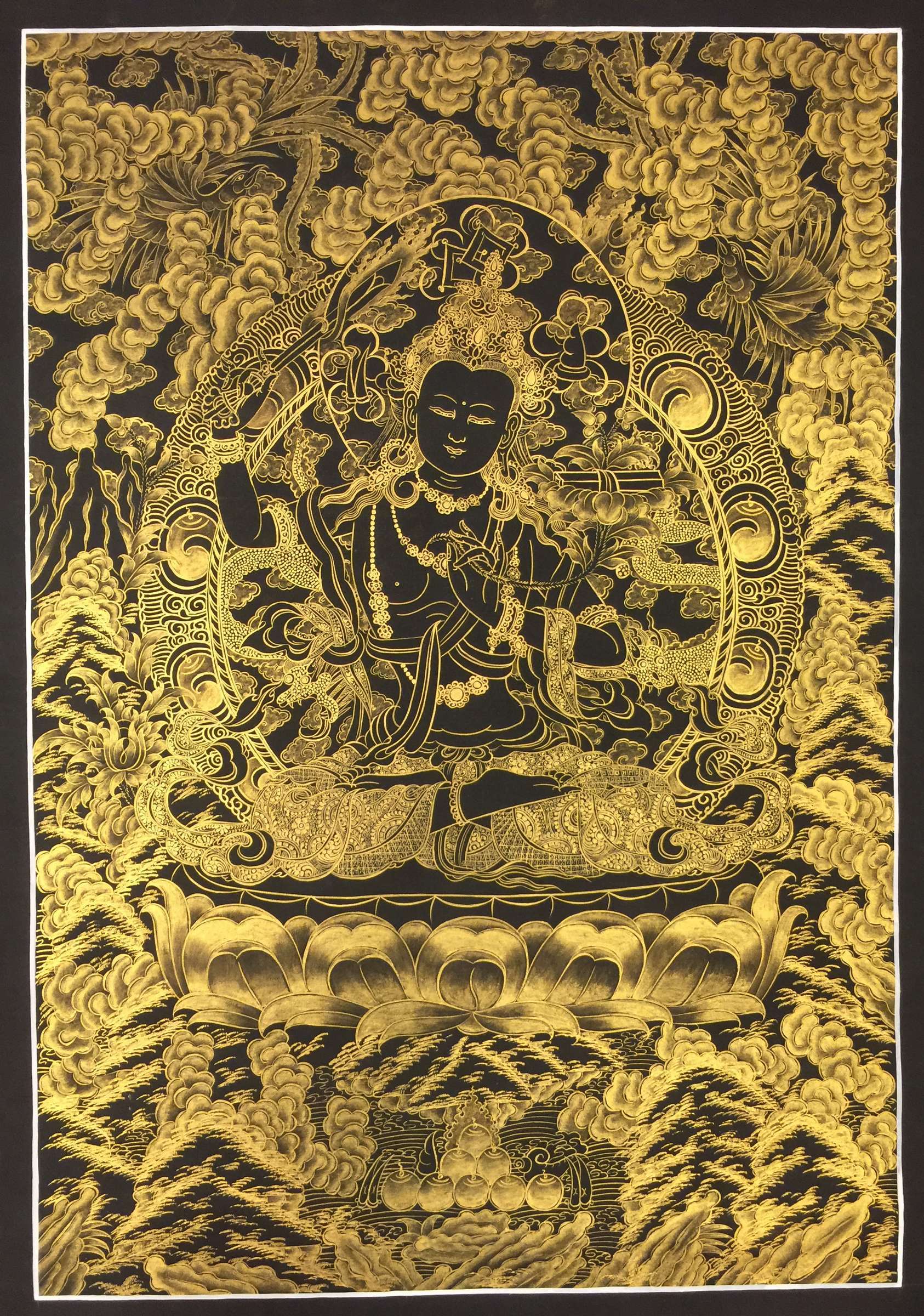

Precious Master - Guru Rinpoche Thangka
Precious Master – Guru Rinpoche Thangka painting is handpainted on cotton canvas with a beautiful background and fine golden finishing.
Padmasambhava is also referred to as the Second Buddha as he’s so important for assisting in the founding of Tibetan Buddhism in Tibet.
It is because of his activity that the Dharma was firmly established in the ‘roof of the world’. Padmasambhava was born in the 8th century and he was a tantric master and famous for performing miracles.
In Tibetan, Guru Padmasambhava is generally referred to as Guru Rinpoche, which means “precious master.” Guru Rinpoche is a totally enlightened being, a fully awakened one, a buddha.
He did not become enlightened gradually, or start practicing the teachings of Buddha Shakyamuni and eventually achieve enlightenment. Guru Rinpoche incarnated as a fully enlightened being.
Through his form, primordial wisdom manifests in the world to benefit all sentient beings.
Guru Padmasambhava
Padmasambhava was a history teacher who is said to have converted Tibet to Buddhism. He was a renowned scholar, meditator, and magician, and his mantra suggests his rich and diverse nature.
Padmasambhava, Means The Lotus-Born, was a sage guru from Oddiyana who is said to have transmitted Vajrayana Buddhism to Bhutan and Tibet and neighboring countries in the 8th century.
In those lands he is better known as Guru Rinpoche (“Precious Guru”) or Lopon Rinpoche, or, simply, Padum in Tibet, where followers of the Nyingma school regard him as the second Buddha.
Guru Rinpoche Padmasambhava said:
“My father is the intrinsic awareness, Samantabhadra. My mother is the ultimate sphere of reality, Samantabhadri. I belong to the caste of non-duality of the sphere of awareness. My name is the Glorious Lotus-Born. I am from the unborn sphere of all phenomena. I consume concepts of duality as my diet. I act in the way of the Buddhas of the three times.”
The iconography of Guru Padmasambhava
The khatvanga, a danda with three severed heads denoting the three kayas (the three bodies of a Buddha: the dharmakaya, sambhogakaya, and nirmanakaya), crowned by a trishula and dressed in a sash of the Himalayan Rainbow or Five Pure Lights of the Mahabhuta is a particular divine attribute of Padmasambhava and intrinsic to his iconographic representation.
His two eyes are wide open in a piercing gaze. On his body, he wears a white vajra undergarment and, on top of this, in layers, a red robe, a dark blue mantrayana tunic, a red monastic shawl decorated with a golden flower pattern, and a maroon cloak of silk brocade. He has one face and two hands.
In his right hand, he holds a five-pronged vajra at his heart; and in his left, which rests in the gesture of equanimity, he holds a skull-cup in the center of which is a vase of longevity filled with the nectar of deathless wisdom. Cradled in his left arm is a three-pointed khatvanga representing the consort Mandarava. On his head, he wears a five-petalled lotus hat.
Wrathful and smiling, he blazes magnificently with the splendor of the major and minor marks. He is seated with his two feet in the royal posture.
The mantra of Guru Padmasambhava
Om Ah Hum Vajra Guru Padma Siddhi Hum
Meaning of the Mantra
- Om is the perfect splendor and richness of sambhogakaya
- Ah is the total unchanging perfection of dharmakaya, the manifest body of absolute reality
- Hung perfects the presence of Guru Padmasambhava as the nirmanakaya, the manifest body of emanation
- Vajra perfects all the Heruka deities of the mandalas
- Guru refers to the root and transmission gurus and the holders of intrinsic awareness
- The Padma perfects the assembly of dakas and dakinis
- Siddhi is the life force of all the wealth deities and the guardians of the treasure teachings
- Hung is the life force of the Dharmapala, the protective deities

